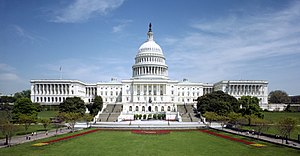Here are some highlights from remarks by President Trump at the 2019 National Historically Black Colleges and Universities Week Conference. This is the link to the entire speech.
HBCU graduates have improved and uplifted every feature of American society. From your halls came great Americans like Booker T. Washington, Rosa Parks, Ida B. Wells, Supreme Court Justice Thurgood Marshall, NASA mathematician Katherine Johnson, acclaimed inventor Lonnie Johnson, Air Force General Daniel James Jr., NFL Hall-of-Famer Jerry Rice, and legendary Coach Eddie Robinson. Eddie Robinson was a good coach. (Applause.) I think Eddie Robinson won more games than anybody, didn’t he? (Laughter.) Is that true? Is that true? I think so.
And we are — by the way, have Scott Turner, speaking about good football players. Where is Scott? He’s leading such a great charge with the Opportunity Zones. (Applause.) Thank you, Scott. He’s a great, great gentleman. He works so hard. He goes — he’s all over the place. I say, “Where’s Scott today?” He’s in about six cities at one time. (Laughter.) And the Opportunity Zones have really caught on. Been incredible. Thank you, Scott.
During World War II, Tuskegee University trained the young Americans who would become the legendary Tuskegee Airmen. That was great group of people.
Reverend Martin Luther King, Jr. graduated from Morehouse College. (Applause.) That’s great.
And African American students helped plan the Montgomery Bus Boycott in the basement of another HBCU, Alabama State University. (Applause.)
Our Historically Black Colleges and Universities have always challenged our nation to be better and braver, to do what is right, to dream bigger, aim higher, and always be bolder in pursuit of what is just, decent, and true.
HBCUs represent only 3 percent of America’s higher education institutions. You get graduates — 80 percent — think of that: 80 percent of African American judges, 40 percent African American engineers, and more than 50 percent of African American doctors. That’s an incredible statement. From 3 percent overall to 50 percent and more for doctors. (Applause.) That’s an incredible statistic. It’s an incredible achievement.
My administration is deeply devoted to advancing this amazing legacy of success, commitment, and contribution to our nation. You have never stopped working to improve this country, and you deserve a government — you have to just keep going. You really do deserve a government that never stops working for you. And you never stop working for it. You’re amazing people in this room. Incredible people. And I congratulate you for it. (Applause.)
That is why, in my first weeks in office, I took action to make HBCUs a top priority once again. I signed an executive order to move the federal HBCU initiative to the White House, right where it belongs. (Applause.)
…And thanks to Secretary DeVos leadership and her work with many of you, we’ve also made unprecedented progress to reduce unnecessary regulatory burdens so that your institutions are free to innovate and offer more flexible ops — you know, options for the students. And you’re doing that. You’re doing a lot of great options. I looked at some before. They’ve got a lot of really great options, and that’s what you need.
Today, I’m thrilled to announce another major action we’re taking to protect HBCUs. Previously, federal law restricted more than 40 faith-based HBCUs and seminaries from fully accessing federal support for capital improvement projects. This meant that your faith-based institutions, which have made such extraordinary contributions to America, were unfairly punished for their religious beliefs. Did we know that? Did everybody know that? Because it was — it was hap- — that was not good.
This week, our Department of Justice has published an opinion declaring such discriminatory restrictions as unconstitutional. (Applause.) It was a big step. And from now on, faith-based HBCUs will enjoy equal access to federal support. (Applause.)
When I came into office, I directed the entire federal government to develop a strategy to support Historically Black Colleges and Universities. Today, 32 federal departments and agencies have released statements of priority that are helping your institutions receive resources and support that you deserve.
To read the entire speech, follow the link above. Those who are accusing the President of being a racist need to look at his actions toward minority communities. His economic policies have done more to lift minority communities out of poverty than any previous president. I think actions speak louder than words, and I think this president should be evaluated on his actions, rather than words the media has twisted and taken out of context.






